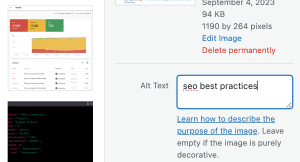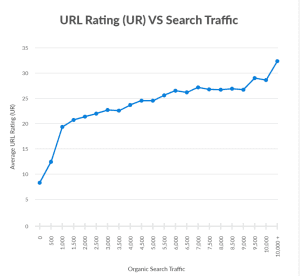Many lists of SEO best practices contain outdated or impractical advice, often targeting a limited audience. In contrast, true best practices should benefit everyone, whether you run a blog, an e-commerce store, or a local brick-and-mortar business. In this article, we’ll delve into the essential SEO best practices that should be applied to every page on your website.
- Secure Your Site with HTTPS
Implementing HTTPS on your website encrypts the data transmitted between visitors and your server, enhancing security. Google has considered HTTPS a ranking factor since 2014. To check if your site uses HTTPS, look for a padlock icon in your browser’s address bar. If it’s not secure, obtain an SSL certificate, which can often be acquired for free from providers like Let’s Encrypt.

2. Optimize Page Load Speed
Page speed impacts user experience and SEO, with Google taking into account both desktop and mobile page speed since 2010 and 2018, respectively. Google’s Pagespeed Insights tool can help you assess your page speed and provide improvement suggestions. Use Google Search Console’s Speed report for a comprehensive overview of which pages need attention.


3. Target Keywords with Traffic Potential
Effective keyword research is essential for SEO success. Focus on keywords with traffic potential, as high search volume alone may not guarantee traffic. Analyze the top-ranking pages for your target keywords to understand their estimated traffic and relevance within the broader topic.
4. Match Search Intent
Ensure that your content aligns with user search intent. Pages should satisfy the informational, navigational, or transactional needs of searchers. Analyze search results to understand the type of content Google favors for specific queries.
For example, if someone searches for “how to make pasta” would generate the following search result:

It will show blogs rather than any e-commerce website. Google understands that the search intent is ‘informational’ and not ‘transactional’.
Similarly, if someone searches for “buy pasta online” would generate the following search result:

All the links lead to different e-commerce websites. Here, Google understands that the intent is to buy i.e. transactional and not to seek information.
5. Craft Engaging Title Tags and Meta Descriptions
Craft Engaging Title Tags and Meta Descriptions Your title tags and meta descriptions not only influence rankings but also affect click-through rates. Keep titles under 60 characters and descriptions under 150 characters. Align your titles and descriptions with search intent, use proper case formatting, and include power words to entice clicks.

6. Optimize Images
Apart from compressing images for faster loading times, add descriptive alt tags and use clear, relevant filenames. Optimizing images can improve your visibility in Google Images and enhance accessibility for users.


7. Create Comprehensive Content
Thorough content, covering relevant subtopics and addressing user queries, can attract more traffic from long-tail keywords. Explore related keywords on top-ranking pages, examine “People also ask” results, and utilize tools like Ahrefs’ Content Gap analysis to identify subtopics.
8. Employ Internal Links
Internal links help distribute PageRank and assist Google in understanding your website’s structure. Include internal links from relevant pages to new content, enhancing overall site visibility.
In simple terms, when a page gets more links from both outside and inside sources, it tends to rank higher. This is a fundamental part of how Google decides which pages to show at the top of search results, and it’s still very important today.

Internal links also help Google understand what a page is about.
9. Build Quality Backlinks
In the ever-evolving world of search engine optimization (SEO), one thing remains constant: backlinks are crucial. These little hyperlinks, which connect one website to another, play a pivotal role in determining a website’s authority and ranking on search engine results pages (SERPs). However not all backlinks are created equal. To truly boost your website’s SEO game, it’s essential to focus on building high-quality backlinks.
So, what exactly are quality backlinks, and why do they matter?
Quality backlinks are links that come from authoritative and reputable websites in your industry or niche. When these well-respected sites link to your content, it signals to search engines like Google that your website is also trustworthy and valuable. This endorsement can lead to improved rankings, more organic traffic, and increased visibility for your site.
Here are some effective strategies for building quality backlinks:
- Create Exceptional Content: The foundation of attracting quality backlinks is to produce outstanding content. Content that is informative, engaging, and valuable to your target audience naturally attracts links. When others find your content useful, they’re more likely to reference it on their websites.
- Guest Blogging: Writing guest posts for authoritative blogs or websites in your niche can be an excellent way to secure quality backlinks. Ensure your guest posts are well-researched, insightful, and relevant to the hosting site’s audience.
- Broken Link Building: Identify broken links on authoritative websites that relate to your content. Reach out to the site owner or webmaster, politely notifying them of the broken link, and suggest replacing it with a link to your relevant content.
- Collaborate and Network: Building relationships with influencers and industry leaders can lead to natural backlinks. Engage with them on social media, share their content, and, in turn, they may reference your content.
- Utilize Online Directories: Submit your website to reputable online directories and business listings. These platforms often allow you to include a link back to your site, boosting your online presence.
- Create Infographics: Infographics are highly shareable and can generate a significant number of backlinks if they provide valuable information in an easily digestible format. Share your infographics on platforms like Pinterest to maximize exposure.
- Social Media Promotion: Share your content on social media platforms, encouraging your followers to engage and share it further. While social signals themselves may not directly impact SEO, increased visibility can lead to more backlink opportunities.
- Monitor Your Backlinks: Regularly check your backlink profile to ensure that the links pointing to your site are from reputable sources. Disavow any spammy or low-quality backlinks to maintain a clean profile.
Building quality backlinks is an ongoing process that requires patience and persistence. By consistently producing valuable content, networking with industry peers, and employing these strategies, you can enhance your website’s authority, visibility, and ultimately, your search engine rankings. Remember that quality always trumps quantity in the world of backlinks, so prioritize relevance and authority when pursuing these valuable connections.
10. Continue Learning and Improving
SEO best practices are dynamic. Keep learning and adapting to algorithm changes and evolving industry trends to maintain your website’s visibility in search results.
Incorporate these 10 SEO best practices into your website optimization strategy to enhance your online presence and improve search engine rankings.
No related posts.






